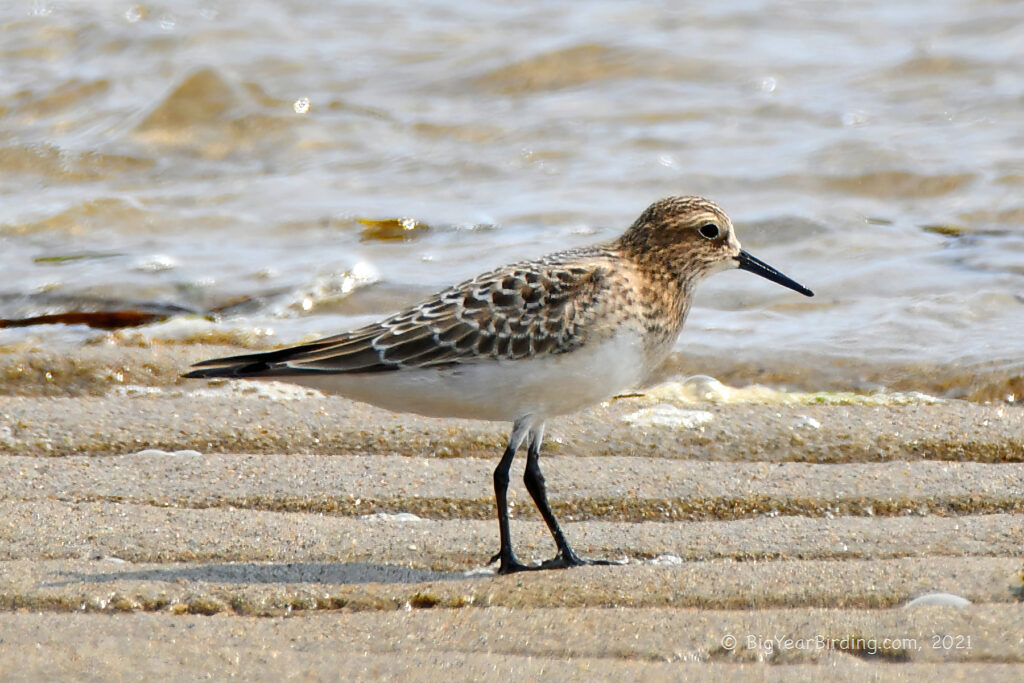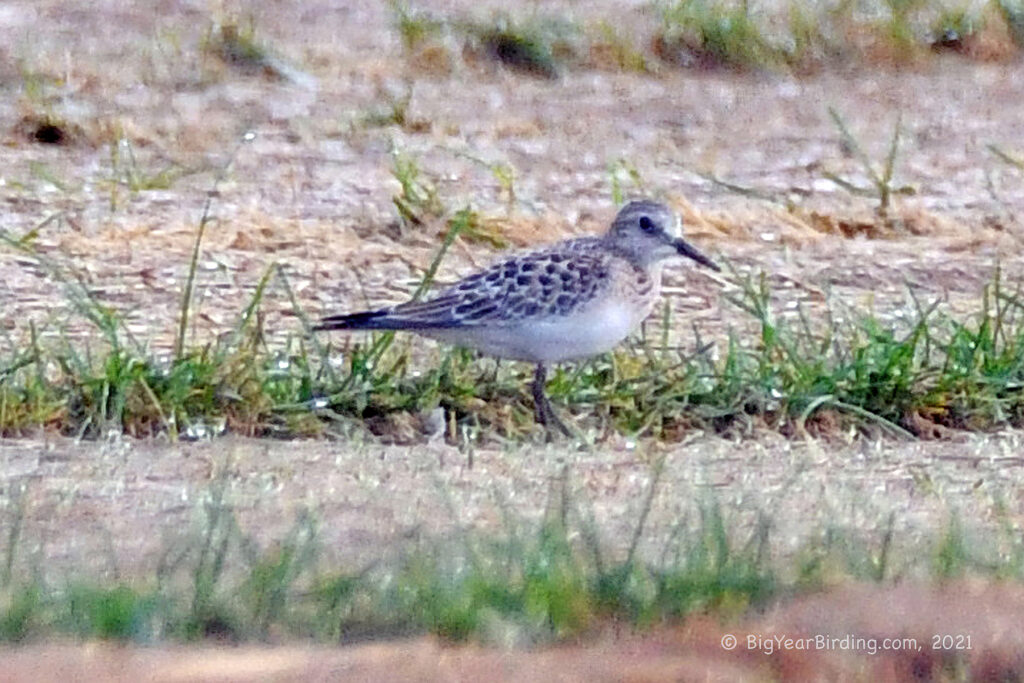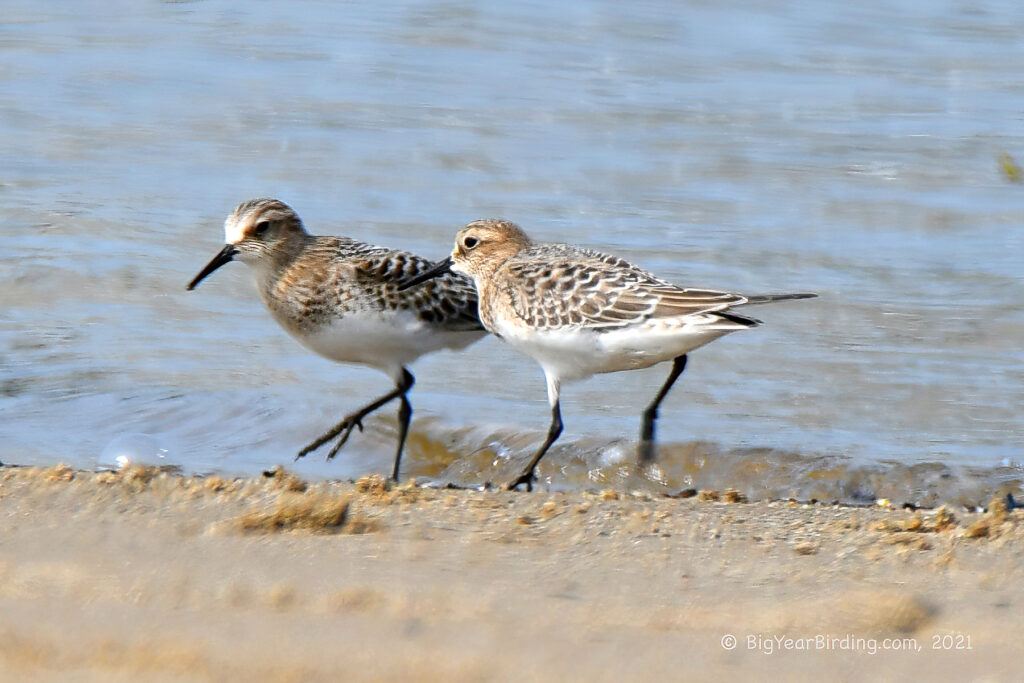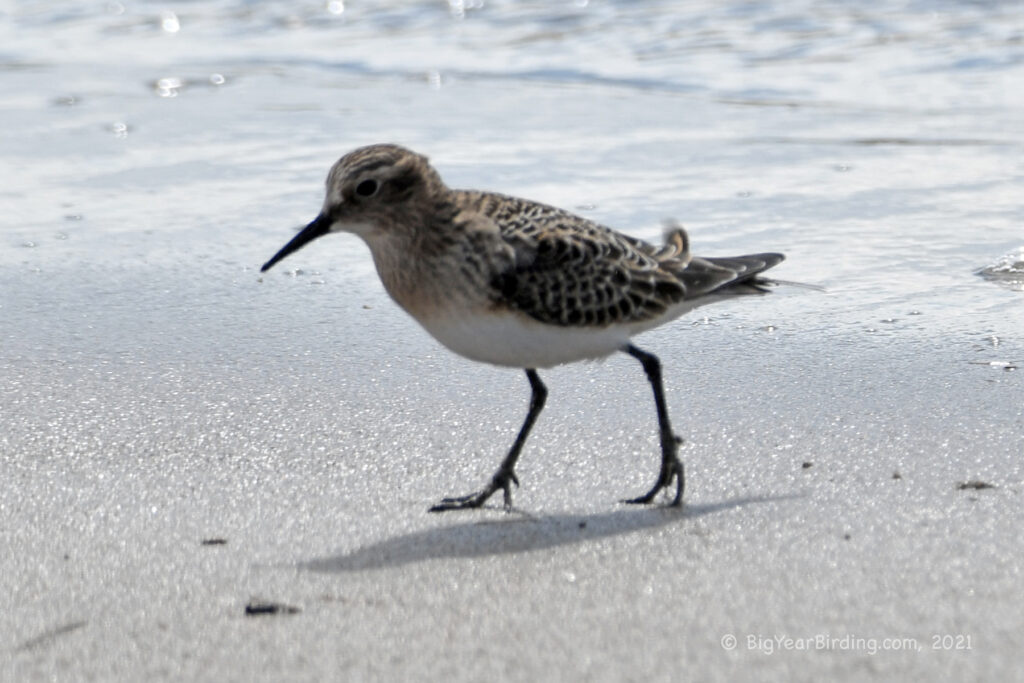
Baird’s Sandpiper is a small shorebird species that breeds in the Arctic regions of North America and Siberia. This species belongs to the sandpiper family Scolopacidae and is considered a long-distance migrant. Baird’s Sandpipers are about 7-8 inches long and weigh approximately 1-2 ounces. They have a wingspan of about 16 inches.

Distinguishing field marks of Baird’s Sandpiper include a relatively short bill that is slightly drooped at the tip, and a brownish-gray upper body with blackish-brown feathers on the wings. The underparts are white with fine brown streaking. In flight, they show a conspicuous white rump patch.
Baird’s Sandpipers breed in the high Arctic tundra, from northern Alaska to eastern Siberia. During migration, they fly through central North America, often in large flocks. They winter in coastal areas of South America, from Peru to Argentina. Their migration route is one of the longest of all North American shorebirds, covering up to 15,000 miles round trip.
During migration, Baird’s Sandpipers can be found in a variety of habitats, including mudflats, beaches, marshes, and wet meadows. They feed on small invertebrates such as insects, crustaceans, and mollusks. They use their short bill to probe the mud and sand for food.

In conclusion, Baird’s Sandpiper is a small shorebird species with a distinctive appearance and a long migration route. They breed in the Arctic and migrate through central North America to winter in coastal areas of South America. Their migration route covers up to 15,000 miles round trip. When looking for them in the field, birders should look for a small sandpiper with a short bill and brownish-gray upper body with blackish-brown feathers on the wings.

